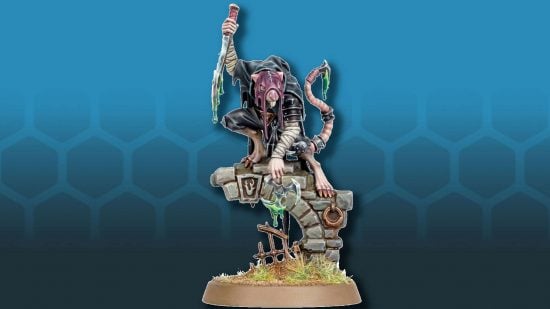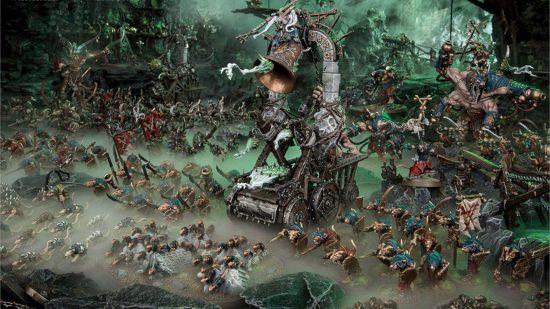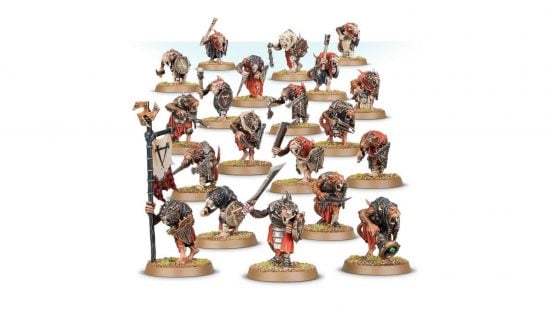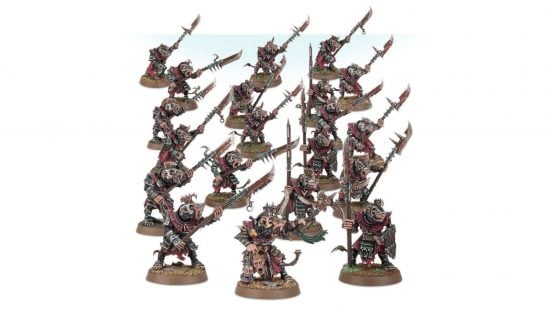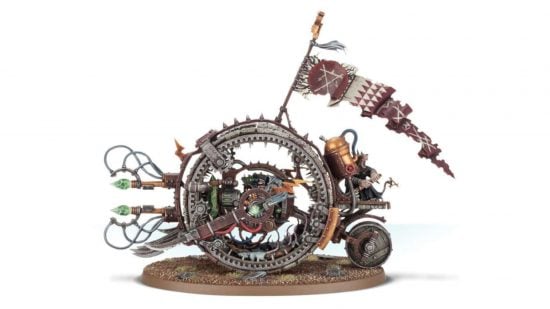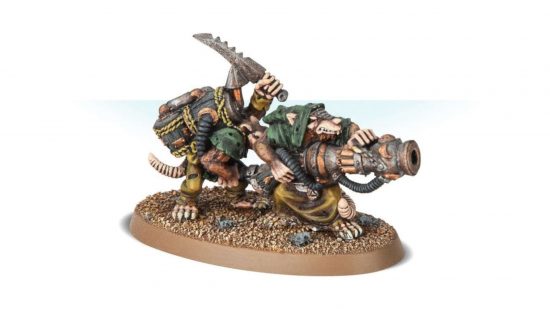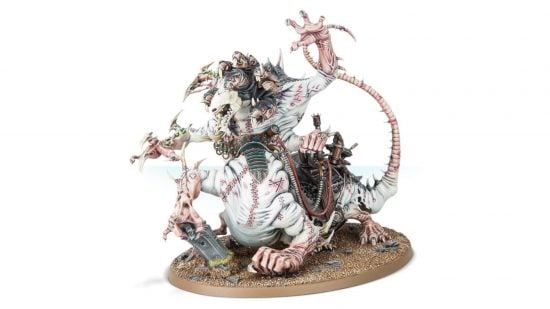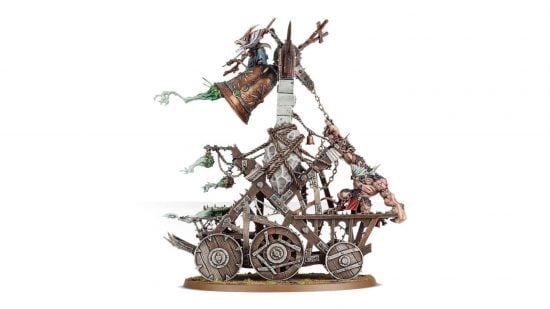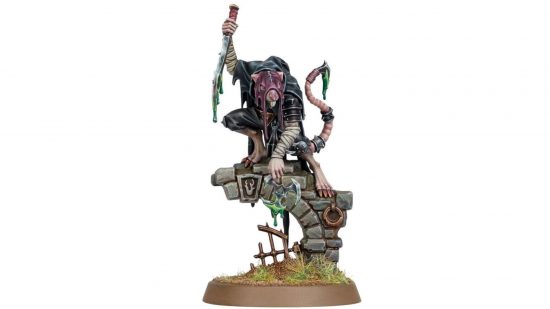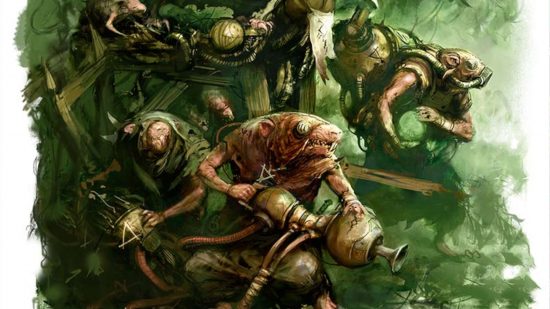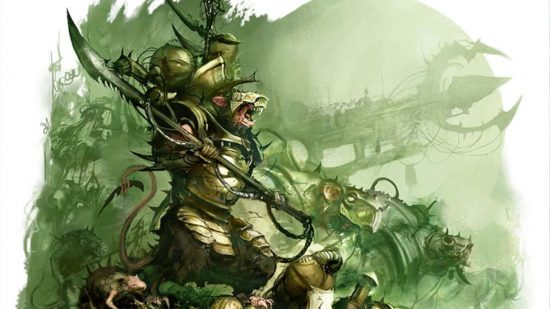Warhammer the Old World Skaven are a race of villainous ratmen. This guide introduces their uniquely chaotic playstyle, with large infantry blocks holding the field while devastating yet unreliable wonder weapons slaughter the enemy – or backfire into the Skaven’s own battleline.
So widespread are the Skaven, you’ll also find Age of Sigmar Skaven that survived the destruction of the Old World and made their way to the Mortal Realms. And there’s no end of speculation as to whether there might be Warhammer 40k Skaven minis some day.
If you decide that the Skaven playstyle isn’t right for you, or you don’t fancy painting miniatures for hundreds of hours to build a massive infantry horde, check out our guide to the other Warhammer: The Old World factions. We also have a useful rundown on the Old World rules, and a breakout for the Old World Combat Phase (which makes Skaven particularly nervous).
Here’s what you need to know about Warhammer The Old World Skaven:
How to play Warhammer The Old World Skaven
To play Warhammer: The Old World Skaven successfully, you need to balance two key factors: chaotic wonder weapons, and masses of miserable infantry. Your potential to cause untold devastation on your enemy is matched only by the potential for everything to blow up in your face, ruining your plans, and sending your army scurrying.
Skaven Leadership is dreadful, and while there are ways to increase it (as we’ll discuss below), a Battle Standard Bearer is an essential inclusion. If you want to include them in a unit so as to gain the BSB bonus to combat resolution, consider giving them the Cautious Shield upgrade, which lets them forego their attacks to receive a+3 boost to their armour save.
The tailbone of a Skaven army is the humble Clanrat unit. The Horde special rule allows them to claim up to a +3 rank bonus in combat, and the Warband special rule adds that rank bonus to their Leadership: the bigger the unit, the more likely it is to win combat and to pass a break test if things turn sour. We suggest at least 30 models in a unit.
That rule applies to your other infantry blocks too – the elite Stormvermin, frenzied Plague Monks, and bestial Giant Rats – which all share the Horde and Warband combo. Optimising for large units will result in a packed battleline, which makes maneuvering tricky – but the damage dealing parts of your army take up a much smaller footprint.
While a big block of Skaven infantry has some staying power, and moderate hitting power in the case of Stormvermin and Plague Monks, it won’t win any battles. That’s where your wonder weapons come in.
The Skaven arsenal of warmachines, magic users, mutant monsters, and underhanded tricks is as deadly as it is unstable. These tools pack a lot of damage potential into a compact footprint, but they won’t always unleash it on your enemy.
Clan Skryre makes lethal, and unreliable, super-weapons. The Warp Lightning Cannon doesn’t need to roll to hit – it just projects a random strength beam of lightning a random distance forward. Don’t be afraid to scorch some of your cheap Clanrats with the beam if it lets you hit a juicy enemy target. The optimal position for this artillery piece is on the flank – just watch out for the misfire result that fires it in a random direction, such as down the length of your battleline.
Even less reliable, the Doom Wheel is a giant hamster wheel of death. It’s a heavy chariot with a random movement speed that generates a cloud of warp lightning templates at the end of its move. Those templates are potentially lethal, but they’ll scatter randomly after you’ve placed them.
While you could isolate the Doom Wheel from your forces to protect them, it’s better to think of the potential for friendly fire as the price of doing business: Skaven lives are cheap.
Clanrats and Stormvermin can be upgraded with accompanying weapon teams. These have stats halfway between war machines and lone characters, mounting the firepower of a full flame cannon, organ gun, or stone thrower onto the feeble shoulders of two lowly clanrats. As long as the team is lurking close to its parent unit opponents can’t easily target it, but should it be outmaneuvered by flankers with ranged weapons it’ll die quickly.
Several potent melee units in the Skaven list have the Frenzy special rule: Rat Ogre monstrous infantry, the Plague Furnace heavy chariot, and the Hell Pit Abomination behemoth. Frenzy means these units must charge whenever it’s an option, a liability that will see them drawn out of your battle line by any lure that your enemy sets.
While it’s tempting to use your valuable shooting to clear out bait units, your frenzied units are also durable, and have a good chance of surviving enemy counter-assaults.
Skaven have access to many lores of magic, and some potent signature spells: Cloud of Corruption creates a 3” magical vortex that blocks line of sight and a 9” aura of reduced toughness for your enemy; Warp Lightning is a cavalry frying magic missile; and Skitterleap can teleport a character a huge distance and even out of combat.
Consumable Warpstone tokens boost your Wizard’s casting rolls, guaranteeing you cast your spells and making them much harder to dispel, at the risk of inflicting wounds on the caster. As a Grey Seer or Warplock Engineer that cannot enact the wishes of the Council of Thirteen is as good as dead, you may as well gobble down those radioactive scooby snacks.
The Skaven of Clan Eshin add some lethal trickery for your army. Eshin Master Assassins are expensive characters with high WS and Initiative who start the game hidden within your infantry blocks. They’re fantastic character killers. The risk here is that their unit never makes contact with an enemy character, or worse, the unit containing them flees off the board before they get to spring an ambush.
Speaking of ambushes, Eshin Gutter Runners can be upgraded with the Ambush special rule, and the Warp Grinder weapon team grants its parent unit the Ambush ability too. This lets you put a unit into reserve with the option to enter the battlefield behind the enemy – assuming you can make your reserve rolls.
You simply cannot mitigate the risk of catastrophic failure in a Skaven army. If you embrace it, you’ll have so much fun that you won’t care when things go horribly, horribly wrong.
Old World Skaven Lore
Skaven lore is hard to come by in the Old World. During the period in which the latest edition of Warhammer takes place, the Skaven underempire is gripped by one of its periodic civil wars.
While vicious underground battles rage between the clans of ratmen, the surface races enjoy a period of blessed relief. So total is the disappearance of the Skaven that they have receded into myth, forgotten by the humans of the Empire and Bretonnia.

The Skaven underempire is a vast tunnel network which spills outwards in all directions from its ruinous capital city, Skavenblight. Skavenblight is built upon the ruins of Kazvar, once a mighty city of men and Dwarfs.
How it fell to ruin is lost to history, but Tilean tales speak of a stranger who offered the great city all it ever dreamed of, and a bell tolling thirteen times, and ruin descending from the sky, and hordes of rats that rose and devoured all…
The Skaven worship the Horned Rat, part of the Warhammer Chaos pantheon. The Horned Rat sits at the head of the Council of Thirteen, where twelve mighty Grey Seers interpret its wishes. The Council leads the many Skaven clans in their quest to dominate the surface races – though often, this means simply preventing the strongest clan from tipping the underempire into another civil war.
Every Skaven believes they are the pinnacle of their species, the greatest genius, the most cunning mastermind, the shrewdest schemer, and the most underhanded backstabber. Every other Skaven is an underling to be exploited, an obstacle to be removed, or a threat that must, temporarily, be mollified.
Skaven are inveterate cowards, and when caught alone or singled out by a superior opponent – which is most opponents – they are quick to squirt the musk of fear, turn tail, and run. The problem for their enemies is that Skaven are very rarely encountered alone. Their hordes are numberless, and their fighting forces seethe with furry bodies, a wall of sharp knives and yellow chisel teeth.
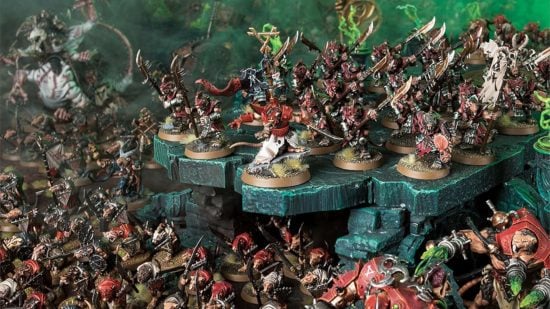
What Skaven lack in strength, bravery, and personal hygiene, they more than make up for in sheer cunning. Scheming, in-fighting, and assassination are all par for the course within Skaven society. It is a
mercy for the other races of the Old World that the Skaven are so divided, because whenever the Council of Thirteen does manage to unify the fractious clans, they have the power to overturn empires.
As creatures of Chaos, Skaven are somewhat inured to its carcinogenic insanity. Their seers and inventors experiment freely with Warpstone, crystals of raw magic.
With this volatile power source the Skaven have created devastating – if unreliable – weapons of war, manufactured abominable mutant warbeasts, and wrought works of great and terrible magic. The fact that many Skaven are blown limb from limb in the process does little to curb their enthusiasm.
If you like the concept of living underground and fielding large amounts of artillery, but would prefer it if they didn’t blow up quite as often, why not check out our guide to the Warhammer Dwarfs?
